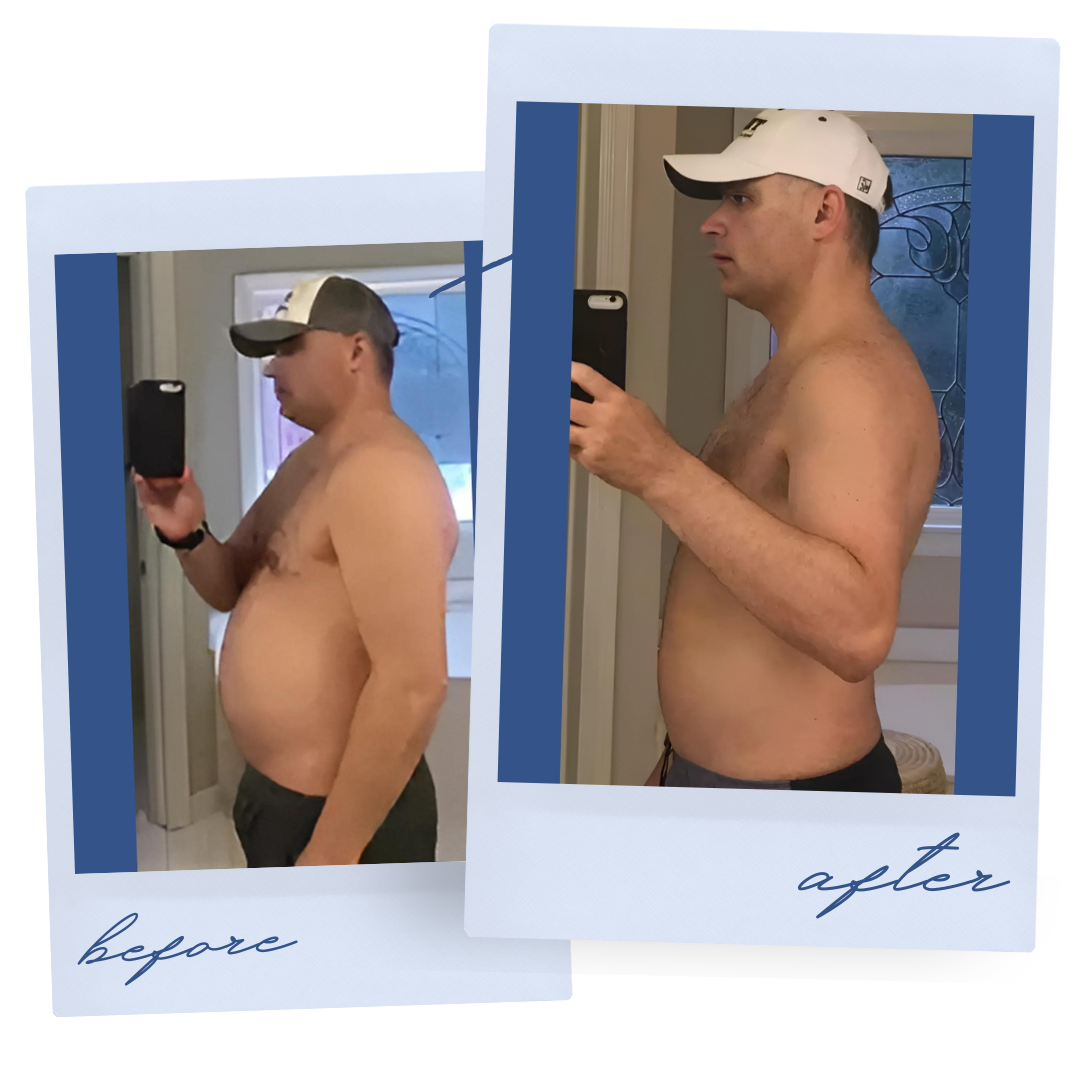Injectable testosterone therapy is a commonly used treatment for men experiencing low testosterone (Low T). It offers improvements in both physical and mental health, but understanding the expected timeline of effects is important for setting realistic expectations. This guide outlines when and how these results typically manifest, along with factors that influence therapy success.
Key Insights into Hormone Replacement Therapy and Its Benefits
- Initial Changes: Increased sexual interest generally begins within three weeks, and improvements in mood often become noticeable around six weeks, peaking between 18-30 weeks.
- Physical Gains: Muscle mass and lean body mass gains stabilize between 12-16 weeks, with peak results around six months.
- Sustained Health: Testosterone therapy can enhance libido, energy, and overall well-being, especially when combined with a balanced lifestyle.
Understanding Testosterone Therapy
Testosterone therapy is designed to restore normal testosterone levels in men experiencing deficiency. Hormone replacement therapy (HRT) is a broader term encompassing both testosterone therapy and other hormone treatments, aiming to restore overall hormonal balance and well-being. The primary goal of testosterone therapy is to alleviate symptoms of low testosterone, such as reduced libido, fatigue, and loss of muscle mass. Several administration methods are available, including injections, gels, and hormone replacement therapy.
Injectable testosterone is preferred for its ability to rapidly increase testosterone levels, though it can sometimes cause fluctuations in mood and energy if not carefully managed. For stable hormone levels, injections are usually administered weekly or biweekly.
Causes and Symptoms of Low Testosterone
Low testosterone, or hypogonadism, occurs when the body produces insufficient testosterone. This condition can result from various factors, including aging, injury, and certain health conditions.
Common symptoms of low testosterone include:
- Decreased libido
- Erectile dysfunction
- Fatigue
- Reduced muscle mass
- Lower bone density
- Weight gain
- Decreased energy levels
If left untreated, low testosterone can lead to severe health issues like osteoporosis, diabetes, and cardiovascular disease. Testosterone therapy can help restore normal levels and alleviate these symptoms.
Besides therapy, natural lifestyle changes can boost testosterone levels. High-intensity interval training (HIIT), strength training, a nutrient-rich diet, adequate sleep, and stress management all support healthy testosterone levels. It’s essential to consult a healthcare provider to determine the best course of treatment, as they can diagnose underlying causes and recommend effective solutions.
When to Expect Results from Injectable Testosterone

Injectable testosterone therapy is gradual, with early changes typically noticed within weeks, while full benefits develop over months. Initial improvements, such as increased sexual interest, are often seen around three weeks after starting therapy. If mood is a concern, positive changes may become apparent by the six-week mark. Physical benefits like muscle mass and strength gains are typically realized in three to four months, with maximum effects around six months.
Consistency and patience are key to achieving optimal outcomes. Additionally, regular exercise and balanced nutrition can further enhance the results of testosterone therapy, making it a comprehensive approach to health improvement.
Overview of Testosterone Therapy Benefits
Testosterone therapy addresses various health issues related to low T, including enhancements to body composition, mental clarity, and overall vitality. Physically, therapy can increase muscle mass and decrease body fat, leading to improved fitness and body composition. Mentally, testosterone can help elevate mood, energy, and focus, reducing symptoms of low libido, depression, and fatigue.
Beyond physical and mental health benefits, testosterone therapy also has metabolic effects. It can improve glucose levels, with results often appearing within 3 to 12 months of starting treatment. Additionally, therapy may lower blood pressure, support cardiovascular health, and increase red blood cell production, which enhances physical endurance.
Forms of Testosterone Therapy
Multiple testosterone replacement therapy options exist, including injections, gels, and oral treatments. Injectable testosterone is often preferred for its efficiency and sustained release, leading to more predictable outcomes with less frequent dosing. Injectable forms are effective in stabilizing hormone levels, reducing the need for daily application or frequent adjustments associated with other methods.
How Testosterone Injections Work
Injectable testosterone works by introducing the hormone directly into the bloodstream, quickly elevating testosterone levels. Once in circulation, testosterone binds to androgen receptors throughout the body. The rapid absorption of injectable testosterone ensures a steady, predictable increase in hormone levels.
Timeline for Testosterone Injection Results

The benefits of testosterone therapy develop progressively and vary based on factors like age, lifestyle, and baseline hormone levels. Here’s a general outline of what patients can expect during treatment:
- Early Effects (First Few Days): Some individuals may notice slight mood and energy improvements within the first few days.
- Short-Term Benefits (First Few Weeks): By the end of the first month, many report improved mood, libido, and energy even if physical changes aren’t yet apparent.
- Long-Term Improvements (Several Months): Significant changes, like increased muscle mass and reduced body fat, generally stabilize between 6-12 months. Mood improvements may peak between 18-30 weeks, and sustained benefits to energy and strength often follow over time.
Additional Health Benefits
In the long term, testosterone therapy can contribute to improved health overall. For example, it may support optimal blood sugar levels and boost red blood cell production, positively impacting cardiovascular health. These improvements usually manifest over 3-12 months, depending on each individual’s health and consistency with therapy.
Factors Affecting Testosterone Therapy Success
Several factors impact the success of testosterone therapy, including dosage, injection frequency, overall health, and lifestyle habits.
- Dosage and Frequency: Correct dosage and timing are crucial for maintaining stable testosterone levels. For consistent hormone levels, patients may need to adjust the injection schedule based on therapy response. Steady testosterone levels contribute to smoother, more predictable results in mood, energy, and physical benefits.
- Health Conditions: Conditions like diabetes or other metabolic issues can influence therapy outcomes. For example, individuals with insulin sensitivity may notice improvements in glucose regulation shortly after beginning therapy.
- Lifestyle Choices: Regular exercise and a balanced diet can enhance testosterone therapy effects. High-intensity interval training (HIIT) and a diet rich in proteins and healthy fats can amplify muscle mass gains. Maintaining a healthy lifestyle supports faster, more pronounced improvements in therapy.
Monitoring and Adjustments

Regular testing is essential to ensure safe and effective testosterone therapy. Monitoring typically begins every 3-6 months to assess hormone levels, effectiveness, and any side effects. Adjustments to dosage or frequency may be made as necessary to keep levels within an optimal range. After stabilization, annual check-ups often suffice, though each patient’s needs may differ. Regular evaluations help tailor treatment, ensuring it remains safe and effective.
Long-Term Outcomes of Testosterone Therapy
Commitment to testosterone therapy can yield lasting quality-of-life improvements. Long-term patients frequently report greater muscle mass, improved mood, increased energy, and enhanced vitality. These benefits often contribute to better physical appearance and confidence as body composition improves.
In the long run, testosterone therapy supports cardiovascular health and may reduce the risk of age-related conditions. For example, testosterone’s impact on insulin sensitivity can improve blood sugar levels, potentially reducing diabetes risk. Elevated testosterone levels also aid red blood cell production, enhancing endurance and cardiovascular performance.
Wrapping Up
Injectable testosterone therapy is a transformative option for those with low T, providing extensive physical and mental benefits. While some changes may be noticeable within weeks, full results generally develop over several months. Adopting a balanced lifestyle and following the prescribed treatment plan optimizes results, leading to sustainable health improvements.
At Atlanta Medical Institute, we are dedicated to helping you achieve and sustain the full benefits of hormone therapy safely and effectively. Our team of experienced professionals is committed to creating personalized treatment plans that cater to your specific needs, ensuring you receive the best care possible. Visit our website to learn more and schedule a consultation with us today.
FAQs
What factors influence testosterone therapy effectiveness?
Health conditions, lifestyle, dosage, and therapy consistency all impact results. Customization with medical guidance improves outcomes.
How is injectable testosterone different from other forms?
Injectable testosterone provides sustained release, requiring fewer doses than daily applications of gels or pills, offering steady hormone levels.
Are there side effects with testosterone therapy?
While most tolerate therapy well, some may experience adjustments in mood or minor side effects. Regular monitoring and adjustments help manage these effects.
How does testosterone therapy impact mental health?
Testosterone therapy can improve mood and reduce symptoms of depression in those with low testosterone, generally noticeable within 3-6 weeks.
Can testosterone therapy enhance muscle strength?
Yes, it supports muscle mass and strength, particularly with regular exercise. Improvements are often seen by 12-16 weeks.




